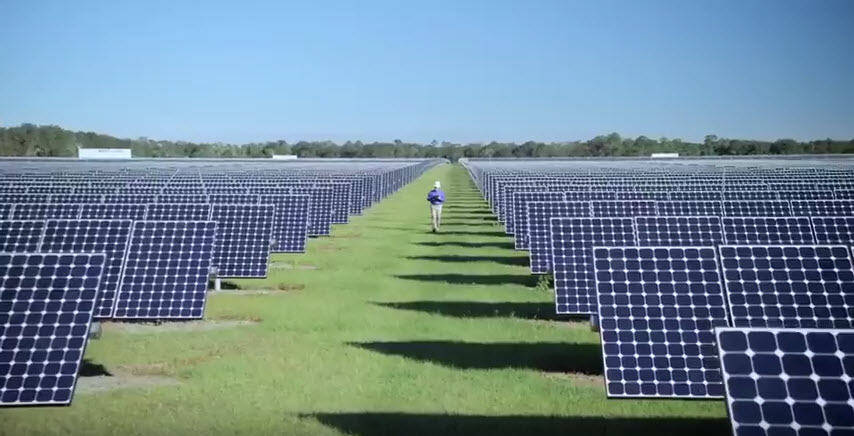The current electricity landscape in the United States is characterized by a move towards solar, wind and natural gas and away from coal, and the latest moves by Florida Power and Light (FPL) can be seen in this regard.
Yesterday the utility announced that it will add another 1.5 GW of solar PV in various locations through 2023, as part of a long-term plan filed with state regulators. This is in addition to the 600 MW of projects which are already underway, and the company also plans to build a new 1.2 GW natural gas plant in Broward County, north of Miami.
Along the way the company plans to retire its older, less efficient Lauderdale gas plant in Broward County and has reached a preliminary agreement to shut down a 1.25 GW coal-fired power plant in Jacksonville, jointly owned with Jacksonville Electric Authority.
This will be the third coal-fired power plant that FPL has announced the closure of in recent years. In contrary to the political manipulation of coal workers employed by the Trump Administration, coal-fired power plants continue to shut down across the country. And despite a brief uptick in coal use expected this year, the long term trend is for lower-priced natural gas, wind and solar generation to replace coal.
FPL has not said where it plans to build the 1.5 GW of new solar, but mentioned a company-owned property in western Miami-Dade County as a “promising location”. By 2023, when all of the plants are built, FPL expects that solar will represent 4% of its energy mix, roughly one-third of the portion in California last year but around three times the 2016 average for the entire United States.
And since this 4% will only be achieved in 2023, FPL’s plans are not terribly ambitious in the overall context of the global Energy Transition. However, these moves by FPL are part of an acceleration of solar in the Sunshine State. Florida represented the 9th-largest state solar PV market in 2016, and the large majority of what is online is new capacity.
The utility also says that both its solar project and its gas plant will provide net savings for its customers, estimating that the 600 MW of new solar currently underway will provide lifetime savings of roughly $39 million.
Like many utilities, FPL has argued that large utility-scale solar projects are a better way to serve its customers than distributed solar, and the company is still trying to live down its investment in a highly deceptive ballot initiative designed to kill the state’s net metering policy.
Florida’s electric rates are already among the lowest in the nation. Across all sectors customers are paying slightly less than the national average of 10.3 cents per kilowatt-hour, and residential customers pay only 11.2 cents per kilowatt-hour – 1.3 cents less than the national average.
This content is protected by copyright and may not be reused. If you want to cooperate with us and would like to reuse some of our content, please contact: editors@pv-magazine.com.









By submitting this form you agree to pv magazine using your data for the purposes of publishing your comment.
Your personal data will only be disclosed or otherwise transmitted to third parties for the purposes of spam filtering or if this is necessary for technical maintenance of the website. Any other transfer to third parties will not take place unless this is justified on the basis of applicable data protection regulations or if pv magazine is legally obliged to do so.
You may revoke this consent at any time with effect for the future, in which case your personal data will be deleted immediately. Otherwise, your data will be deleted if pv magazine has processed your request or the purpose of data storage is fulfilled.
Further information on data privacy can be found in our Data Protection Policy.